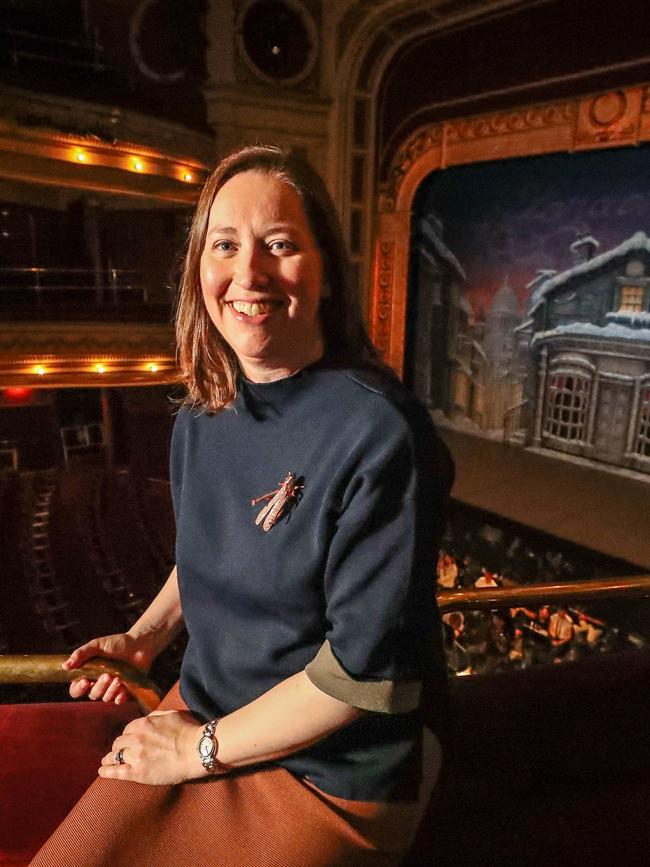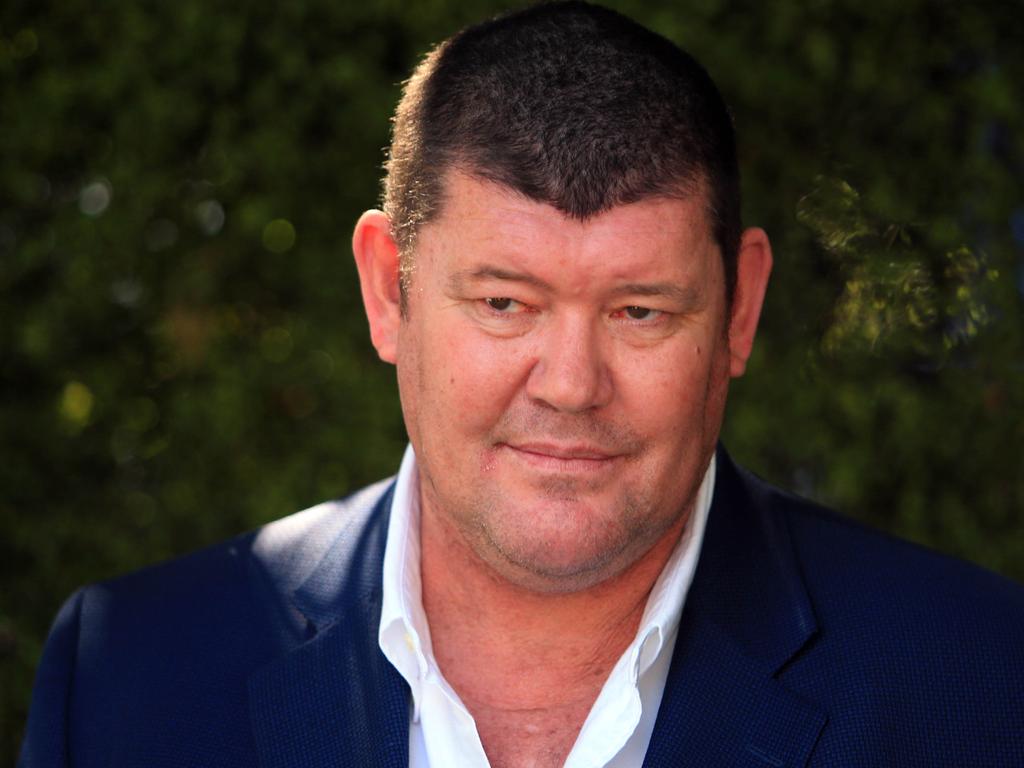Ballet-mad girl Alexandra Burt is now Richest 250’s fairy godmother
Billionaire Alexandra Burt fell in love with the magic of ballet at five years old; now she’s among our most generous arts donors.

Alexandra Burt was already a long-term supporter of the West Australian Ballet when she and her husband Julian decided to do some serious giving to help build an endowment for the company. They started with an initial pledge of $500,000 and a promise to match every dollar from other donors, up to $2 million. That was in November 2019, when the West Australian Ballet had announced its 2020 season and had a reasonable expectation of being able to raise the funds from its community of supporters.
Then came the event no one had seen on their dance card. The coronavirus pandemic rapidly shut down theatres, cancelled tours, ended rehearsals. There was no option but for WA Ballet to cancel its Genesis season of contemporary choreography, due to go on in March. That was when Burt decided to increase her offer. In light of the pandemic, she extended the deadline for matched funds from June to December, and raised the $2 million limit.
Read the full 2021 edition of The List: Australia’s Richest 250
“We didn’t know what the landscape would be for philanthropy at that very new and uncertain era,” says Burt. By year’s end, WA Ballet had raised $2.5 million, with Burt adding another $2.5 million, plus the initial $500,000. The endowment campaign realised $7.75 million in total, including an earlier gift of $1.6 million from Jack Bendat’s family foundation.
Burt has been a lifelong enthusiast of classical ballet, having started dance classes herself when she was five. She has been WA Ballet’s patron of private giving since 2007. After her father, iron ore magnate Peter Wright, died in 2012 – leaving Burt a share of his estimated $1.5 billion fortune – her support for WA Ballet increased. Since she came into her inheritance, she has taken over the family’s Voyager Estate winery in WA’s Margaret River, and with husband Julian has added to their portfolio of luxury retreats, the Landsmith Collection. It includes historic Bullo River Station in the Northern Territory and Margaret River’s Wallcliffe House.

Burt’s philanthropy extends to the West Australian Symphony Orchestra and the Australian String Quartet, and she and her husband are principal patrons, through the Wright Burt Foundation, of the Botticelli to Van Gogh exhibition of masterpieces from London, at the National Gallery of Australia. She regards philanthropy as a combination of chequebook and love as it allows her to engage meaningfully with ballet, classical music and exhibitions. “Where the capacity is there, philanthropy can do some amazing things,” she says. “Financially, each of these companies – dance, and the performing arts – [has] a need for ongoing operational support … but if they know they have some philanthropic support behind them it gives them confidence, it gives them faith. Particularly in those with an artistic temperament, those things are really important.”
In a year in which private wealth and consequently private philanthropy was imperilled by the pandemic-induced lockdown and disruptions to the economy, individual donors and syndicates stepped up to support both individual artists and companies. One immediate way in which donors big and small lent a hand was by donating the value of their tickets back to arts companies in lieu of refunds for cancelled performances. Almost half of all ticketholders for the Australian Chamber Orchestra, for example, donated their tickets back to the organisation.
Donors were ready with emergency funds, particularly early in the pandemic when arts companies confronted a sudden loss of cash flow. One of the biggest potential casualties was Sydney’s Carriageworks, the venue that went into administration when it was unable to collect hire fees because of cancelled events, including last year’s Sydney Writers Festival. In July, Geoff Ainsworth and his wife Johanna Featherstone, through their Oranges & Sardines Foundation, held out a lifeline to Carriageworks with a $200,000 donation and a low-interest loan of up to $1.8 million. The Neilson Foundation, the Gonski Foundation and the Packer family also lent a hand. Within a few weeks, Carriageworks was able to reopen, and had secured a 10-year lease on the former railway workshop and a five-year funding agreement with the NSW government.
Critically for the arts through the pandemic is that donors did not withdraw support when projects tied to specific grants were unable to go ahead.
Grant conditions were relaxed, and arts organisations with longstanding philanthropic partners in some cases received emergency aid.
“People have a fair awareness of the relative health of the companies they support,” says Fiona Menzies, chief executive of Creative Partnerships Australia. “When people give, they want to see demonstrated need … I think most trusts and foundations wanted to look after the people they were currently funding, before looking to do anything further. And there are certainly some donors who went out of their way to provide additional help.”
Philanthropy Australia’s Arts Funders Network stepped up with emergency relief grants of $1000 each. In total, $1.54 million was contributed by the group of 25 individuals, families and foundations – including the familiar names of Myer, Mordant and Minderoo, the Forrest family foundation – in aid of 1540 artists and arts workers experiencing hardship.
The relief grants were directed to those who “might not be able to access already-announced support initiatives”. Although the network’s members didn’t say it in so many words, the grants were a welcome gesture of support when the federal government’s JobKeeper wage subsidy was not available to many artists who work in the gig economy.
Neal Harvey, chair of the Arts Funders Network, says it was possibly the first time that philanthropy has responded in such a way to a crisis in the arts. “Philanthropy Australia played a critical role in galvanising the sector and connecting like-minded philanthropists with one another to provide support,” says Harvey, who recently began as chief executive of the Tim Fairfax Family Foundation. “Working in collaboration and coordinating the effort is really important in an emergency such as this, an ongoing emergency. So those kinds of activities further amplified the dollars that were going out the door.”
He adds that philanthropists recognised the potential impact on vulnerable arts organisations that were unable to produce performances and earn ticket revenue. “Every state and territory has examples of philanthropists who have stepped up and provided support,” he says. “Many have sought in the first instance to further support those organisations they already have a relationship with. That allowed them to work quickly into action, if there’s already a relationship there.”
Melbourne property developer Hans Henkell has been a long-term donor to opera companies and singing competitions, including Melbourne Opera, a part-time operation that has been staging some of the biggest works in the repertoire. Last August it was due to stage its own production of Wagner’s Ring Cycle with the first instalment of the tetralogy, Das Rheingold. Henkell, from Germany’s Henkell wine-producing family, says he was disappointed the production had to be postponed and he encouraged Melbourne Opera to go ahead early in the new year.
The nation is in the middle of a cultural construction boom that has continued despite the widespread closures of theatres, galleries and other venues in the past year.
The performances of Das Rheingold, staged in February, were a revelation. “It left nothing to be desired; it was a high-level Wagner performance, and all the more astonishing as the singers were entirely from Melbourne,” Henkell says. “Before COVID, everybody would have said ‘Impossible! You can’t stage a Wagner grand opera with just local Melbourne singers.’ It was something very special.”
Major capital campaigns by flagship arts institutions continued through the pandemic, with instances of foundational or transformative donations. The nation is in the middle of a cultural construction boom that has continued despite the widespread closures of theatres, galleries and other venues in the past year.
Most significant was the $20 million donation by the Ian Potter Foundation to the National Gallery of Victoria, launching a campaign to build a third branch of the gallery, NGV Contemporary. Announced in December at the opening of the NGV Triennial, a large-scale exhibition of international contemporary art, the donation is the Foundation’s largest ever. More than a cash pledge, it is a gesture of confidence in the NGV, which must raise $200 million towards the new gallery.
In Sydney, the Australian Museum opened its new extension after it doubled its fundraising target of $7 million. Major gifts came from London-based hedge fund manager Sir Michael Hintze, who contributed $5 million, and from Prudence and Alasdair MacLeod, who gave $3 million through their Macdoch Foundation. And Sydney businessman Peter Freedman, the founder of RODE microphones, early this year pledged $5 million to support the Sydney Festival.
Harvey says he believes forward-thinking philanthropists will be looking at how they can support arts organisations as they adjust to the new operating conditions. They may help theatres adapt for COVID-safe performances, or help a performing arts company explore digital platforms. Donors also have supported new COVID-era enterprises, such as the Melbourne Digital Concert Hall, which produces livestream concerts of classical ensembles and distributes ticket revenue to the musicians.
“Philanthropists are now looking to support organisations that are evolving their delivery models and need to find new ways of presenting or staging work in a COVID-safe manner,” Harvey says. “I think most philanthropists now would be thinking about what’s next. The examples I see around the country are philanthropists supporting organisations they work with to find new ways to get things happening again.”
Read the full 2021 edition of The List: Australia’s Richest 250




